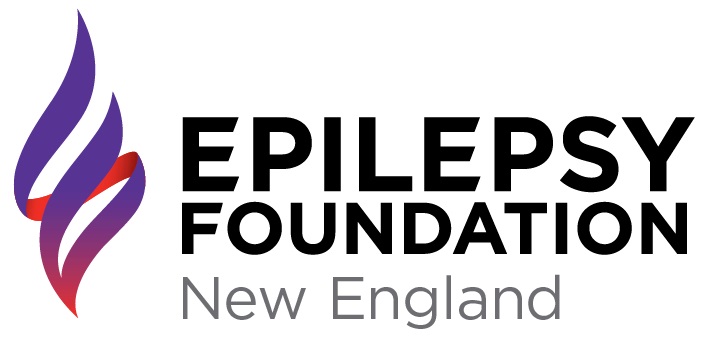Rare Epilepsies

Epilepsy is the fourth most common neurological disease affecting millions of people around the world. While most people are familiar with general epilepsy, there are actually a wide variety of epilepsy diagnoses some of which are rare.
Today on Rare Diseases Day, we want to shine a light on some of these lesser-known types of epilepsy. For example, did you know that there is an epilepsy syndrome that causes people to experience seizures only when they laugh? Or that there is a type of epilepsy that causes seizures only when a person is asleep?
There are many different types of epilepsy, and each one can present in a unique way. That's why it's so important to raise awareness about all of them, especially on Rare Diseases Day.
Rare Epilepsies:
Alternating Hemiplegia of Childhood (AHC)
AHC affects 1 in a million people and affects any and every neurological symptom. Many symptoms include seizures (both epileptic and non), status epilepticus, dystonia, hemiplegic attacks, and many more. AHC is caused by specific groups of mutations in the ATP1A3 gene.
Angelman Syndrome
Angelman syndrome is a genetic DNA & neurological disorder. It causes severe delayed developmental delay, learning disabilities, absence or near absence of speech, challenges with physical balance, inability to coordinate voluntary movements, and sometimes, seizures (hence it is a rare epilepsy). People with Angelman Syndrome often smile and laugh frequently, and have happy, excitable personalities.
Benign Familial Neonatal Seizures (BFNS)
Benign Familial Neonatal Seizures (BFNS) is a condition characterized by recurrent seizures in newborn babies. The seizures begin around day 3 of life and usually go away within 1 to 4 months. The seizures can involve only one side of the brain (focal seizures) or both sides (generalized seizures). Many infants with this condition have generalized tonic-clonic seizures (formally known as grand mal seizures). This type of seizure involves both sides of the brain and affects the entire body, causing muscle rigidity, convulsions, and loss of consciousness.
CACNA1A
CACNA1A variants are associated with multiple neurological disorders. Individuals exhibit a variety of symptoms that fall on a spectrum from mild to severe. People can have a wide range of symptoms or features, including mild-severe epilepsies, encephalopathy, ID, ASD, Hypotonia, ataxia, migraine, cerebella atrophy, and eye disorder.
CDKL5 Deficiency Disorder
With CDKL5, epileptic seizures usually begin in the first 8 months of a child's life. Common seizures include infantile spasms and myoclonic jerks. Most cannot walk, talk or feed themselves, and many are confined to wheelchairs, dependent on others for everything. Many also suffer from scoliosis, visual impairment, sensory issues, and various gastrointestinal difficulties. About 90 percent of those diagnosed with CDKL5 deficiency disorder are girls.
Cornelia de Lange Syndrome (CdLS)
CdLS is a rare genetic disease where approx. 20% of people have epilepsy – the most common seizure type being focal. CdLS is caused by mutations in three known different genes: NIBPL (crom 5p), SMC1A (crom X) and SMC3 (crom 10q), that account for about 65% of cases. The syndrome is characterized by distinctive facial features, psychomotor delay, intrauterine growth restriction (IUGR), hand and feet abnormalities, and involvement of other organs/systems.
Developmental and epileptic encephalopathies (DEEs)
DEEs are a heterogeneous group of rare and ultra-rare epilepsy syndromes that manifest with seizures, behavioral disturbances, or EEG abnormalities that can directly worsen cognition and behavior. These disorders are often progressive and are highly resistant to treatment. These syndromes involve Impaired development (developmental encephalopathies) and Regression of developmental progress (epileptic encephalopathies).
Doose Syndrome/Myoclonic Astatic Epilepsy (MAE)
Myoclonic astatic epilepsy (MAE), also known as Doose syndrome, is an epilepsy syndrome of early childhood, most commonly appearing between ages 1 and 5 and featuring generalized seizures. Children will experience drop attacks and staring seizures, sometimes associated with falls.
Dravet Syndrome
Dravet syndrome is a rare, catastrophic, lifelong form of epilepsy that begins in the first year of life with frequent and/or prolonged seizures. Previously known as Severe Myoclonic Epilepsy of Infancy (SMEI) 80% of people have a mutation in their SCN1A gene.
Dup15q Syndrome
More than half of people with dup15q syndrome have recurrent seizures (epilepsy). The seizures usually develop between the ages of 6 months and 9 years. Infantile spasms in dup15q often progress to Lennox Gastaut syndrome and other complex seizure patterns that may be difficult to control.
Fragile X Syndrome (FXS)
FXS is a genetic condition that causes ID, Developmental delays, anxiety, mental health issues, behavioral and learning challenges, ADD/ADHD, ASD, hand-biting, poor eye contact, sensory disorders, increased risk of aggression. More than 20% of people with fragile X and autism have seizures, compared with about 8% of those with fragile X alone. There are multiple physical features including large ears, long face, soft skin, and large testicles in males.
GLUT1 Deficiency syndrome
In people with Glut1 DS, glucose is not adequately transported from the bloodstream into brain cells. Because glucose is the primary source of energy for the brain, the brain receives inadequate energy in people affected by Glut1 DS. Symptoms can include seizures, developmental delay, movement disorders, and more.
Hypothalamic Hamartoma
Hypothalamic hamartomas (HH) are rare, tumor-like malformations that occur during fetal development and are present at birth. They don't spread and are not cancerous. Common side effects are epilepsy, precocious (early) puberty, and other neurobehavioral symptoms.
Jeavons Syndrome/Epilepsy with Eyelid Myoclonia
Jeavons syndrome (also known as Epilepsy with Eyelid Myoclonia) typically starts between 2-14 years (most between 6-8 years) and is more common in girls. The cause is unknown, but there is likely a genetic predisposition (tendency). Seizures in this syndrome are frequent and occur multiple times a day.
KCNMA1-Linked Channelopathy
KIF1A is a medical condition in which most patients can have epileptic seizures, involuntary abnormal movements, or both. Other symptoms can also occur. It is caused by certain defects (mutations) in a gene called KCNMA1.
Lennox-Gastaut Syndrome (LGS)
LGS can be caused by early brain injury from infection or trauma, genetics, or brain malformations. It can also be caused by some of the other epilepsy syndromes on this page! Affected children experience several different types of seizures most commonly atonic, tonic, and atypical absence seizures.
Migrating Partial Epilepsy of Infancy
Malignant migrating partial seizures of infancy (MMPSI) is a severe form of epilepsy that begins very early in life. Recurrent seizures begin before the age of 6 months but commonly start within a few weeks of birth. The seizures do not respond well to treatment. Although affected individuals may develop normally at first, progression stalls and skills decline when seizures begin; as a result, affected individuals have profound developmental delay.
Ohtahara syndrome/early infantile epileptic encephalopathy (EIEE) with burst-suppression
Ohtahara Syndrome is a rare condition characterized by hard-to-control seizures and developmental delays. It affects newborns, usually within the first three months of life (most often within the first 10 days) in the form of epileptic seizures. Infants have primarily tonic seizures but may also experience focal seizures, and rarely, myoclonic seizures. Ohtahara syndrome is classically caused by very abnormal brain structure that may be due to damage or abnormal development.
Pyridoxine-dependent epilepsy
Pyridoxine-dependent epilepsy (PDE) is a rare cause of stubborn, difficult to control, (intractable) seizures appearing in newborns, infants and occasionally older children, of which more than 200 cases have now been reported in the medical literature. Patients with the classic neonatal PDE experience seizures soon after birth. In retrospect, many mothers describe rhythmic movements in the uterus (womb) that may start in the late second trimester and which likely represent fetal seizures.
Rett syndrome
Rett syndrome (RTT) is a common neurodevelopmental disorder that appears in infancy with regression of acquired motor skills, loss of purposeful activity, hand stereotypies, loss of acquired spoken language, and seizures. Epilepsy affects the majority of patients in a specific clinical stage of the disease and is drug-resistant in approximately one-third of cases.
Ring 20/Ring Chromosome 20 Syndrome/r(20) Syndrome
Ring20 is a condition that affects the normal development and function of the brain. The most common feature of this condition is recurrent focal seizures (epilepsy) in childhood, then some degree of intellectual disability and behavioral difficulties. Additional features of this condition can include slow growth and short stature, a small head (microcephaly), and subtle differences in facial features. People with ring 20 usually have more than one type of seizure.
Tuberous Sclerosis/Tuberous Sclerosis Complex (TSC)
Tuberous Sclerosis is a rare, multi-system genetic disease that causes non-cancerous (benign) tumors to grow in the brain and on other vital organs such as the kidneys, heart, eyes, lungs, and skin. It usually affects the central nervous system and can result in a combination of symptoms including seizures, impaired intellectual development, autism, behavioral problems, skin abnormalities, and kidney disease. The severity of symptoms varies widely. Epilepsy is very common in tuberous sclerosis complex and occurs in 80 to 90% of affected individuals during their lifetime.
West Syndrome/Infantile Spasms
West Syndrome is a rare condition characterized by the onset of epileptic spasms between 3 and 12 months of age, although later onset may occur. Infants may or may not have any identifiable underlying cause(s), but one example includes a structural brain abnormality. Each involuntary spasm typically begins suddenly and lasts for only a few seconds and occurs usually in clusters that can last over 10-20 minutes. It can be considered an epileptic encephalopathy or severe brain disorder.
Questions or Comments? Contact us: info@epilepsynewengland.org or call 617-506-6041



